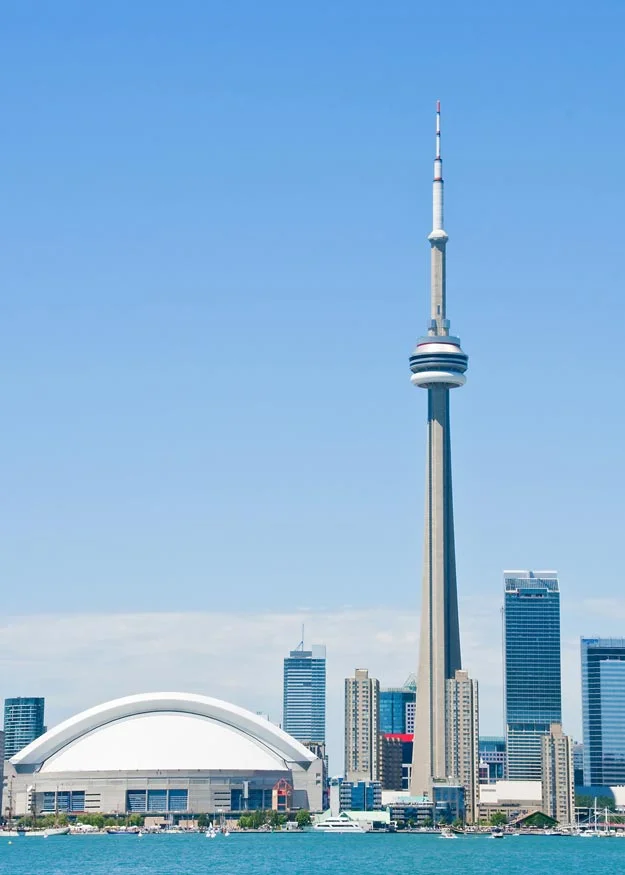Article Directory
So, Toronto is having a moment. And by "moment," I mean a full-blown, high-grade, what-the-hell-is-in-the-water fever dream.
I saw the video this week. You probably did, too. The one with the CN Tower on fire, smoke billowing out over the observation deck, looking like a scene straight out of a disaster movie. People were freaking out, sharing it, gasping. For a few minutes, the internet believed Toronto’s most famous landmark was toast.
Except, of course, it wasn't. It was a deepfake. AI-generated nonsense cooked up by some guy who calls himself a "creator of viral moments." And the official response? A bland corporate statement saying the tower is "safe and secure," and a bunch of "experts" hand-wringing about misinformation and the need for labels. Give me a break.
The real story isn't that someone can fake a video. The real story is how easily we all bought it. What does it say about 2025 that our first instinct upon seeing our city’s icon ablaze isn’t disbelief, but a weary, "Well, of course this is happening"? We're so primed for chaos that a fake inferno feels more plausible than a quiet Tuesday. It’s the perfect appetizer for the main course of this city’s current insanity.
First It Burns, Then You Pay $100,000 for a Ballgame
Once you've processed the fake apocalypse, you can move on to the real one: the Toronto Blue Jays are in the World Series, and the city has completely lost its mind.
People are trying to sell tickets for over a hundred grand. Let that sink in. For a baseball game. I’m not talking about a down payment on a house, I’m talking about the privilege of sitting in a plastic seat for three hours to watch guys swing sticks at a ball. The cheapest nosebleed seats are fetching over a thousand bucks. A grand to sit so far away you might as well be watching from the top of the (not-on-fire) CN Tower in Toronto.
This isn't just sports enthusiasm; it's a symptom of the same fever that makes a fake fire go viral. It's a desperate, frantic energy. A city so jacked up on a cocktail of anxiety and hope that it’s willing to burn through a year's rent for a fleeting shot at collective joy. You can almost hear the city's heartbeat thumping from here, a frantic rhythm of "What if we win?" and "What if it all goes up in smoke?"

And honestly, who can blame them? When you’re living in a place that feels increasingly unreal, maybe dropping an insane amount of money on something tangible, something with a clear winner and loser, feels like the only sane thing to do. Or maybe it’s just late-stage capitalism at its finest. I can’t tell the difference anymore.
A Tale of Two Towers
And then there's the skyline itself. The physical manifestation of this whole chaotic dream. For 50 years, the CN Tower has been the symbol of Toronto. It was a statement of ambition, a lonely needle against the sky. Now, it has company. Or, as the developers would have you believe, a "partner."
Pinnacle International is putting the finishing touches on its SkyTower, a 106-story residential behemoth that will top out right around the height of the CN Tower’s main observation deck. During a recent urban planning conference, the architect and developer were spinning this tale of two towers, calling the new building a piece of "public art" that will "partner up with the CN Tower."
Public art? No, "public art" is a statue in a park. This is a monument to wealth inequality with 800 luxury condos and a hotel inside. This isn't a partner; it's a rival. It’s the new money kid moving in next door to the old-money institution and pretending they’re best friends.
The CN Tower is like an old piece of public infrastructure—a bit dated, maybe a little touristy, but it belongs to everyone. It represents a time when a city built something for the sake of saying, "Look what we can do." The SkyTower represents a time when a city builds something for the sake of saying, "Look what you can buy." Its existence fundamentally changes the CN Tower view, not just visually, but symbolically. It’s diluting the brand. It’s the architectural equivalent of putting a Starbucks inside the Louvre. This isn’t a duet; it’s one singer trying to drown the other one out.
And the city planners are eating it up, talking about "evolving best practices" and creating a "24/7 fully activated mixed-use" city. That’s just consultant-speak for a playground for the rich that never sleeps. The whole thing is a masterclass in PR spin, trying to sell a massive private development as a gift to the public. It’s a bold strategy, you gotta give them that. Offcourse, it's also complete BS.
So, What's the Real Toronto?
I look at all this—the fake fire, the insane ticket prices, the dueling towers—and I don't see a city on the rise. I see a city having an identity crisis. It's a place desperately trying to be a "world-class city" like New York or Dubai, while clinging to the idea that it's still "Toronto the Good." It wants the global spotlight but seems terrified of what that light reveals. Is it the city of die-hard fans and shared public icons, or is it the city of AI-generated chaos and condos you can only see from the outside? Right now, it seems to be both, a weird, shimmering, beautiful mess. A fever dream you can’t quite wake up from.
